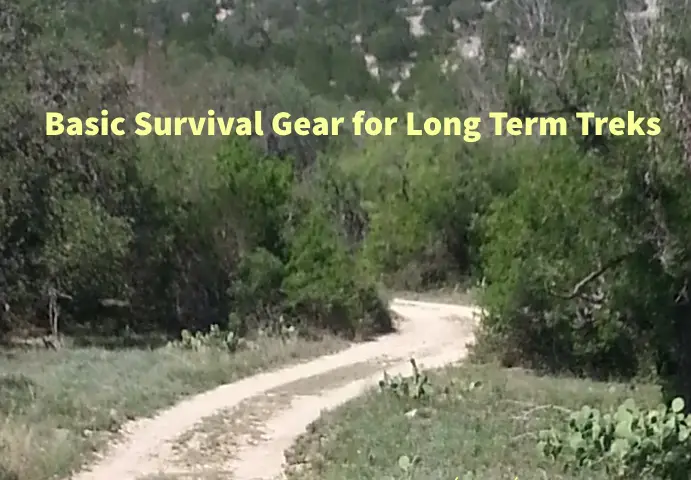By Jack Neely, The Tactical Guru.
As a hiker, outdoorsman or a survivalist enthusiast, you’re basically as safe as your survival gear. The same way a fisherman cannot go fishing without a good fishing rod or a hunter without a crossbow, you also shouldn’t venturing out in the wild without a survival gear. And in this case, we are talking about a homemade survival gear.
The best thing about creating your own survival gear is that it allows you the flexibility of selecting just what you think will come in handy in case the unexpected happens instead of trudging along a ton of unnecessary items into the wilderness. However, regardless of what you would prefer carrying, there a couple of items that wouldn’t miss in any basic homemade DIY survival kit. This includes:
Survival Biscuits
You should have at least a packet or jar of these to nibble along as you confront the mountains and scale down treacherous cliffs. Apart from wild berries (some of which are fatally dangerous) it is likely that you will be too tired to hunt for game after walking several miles under the hot sun. What’s more, unlike other types of food, such biscuits are often very lightweight and you can carry a lot without the weight bogging you down.
Hydration
Water is life, and there is nowhere else this becomes any clearer than in the wild, stranded, tired, exhausted and almost ready to give up. And that’s why it is not necessarily enough to just pack a few bottles of water as you step out for that long mountainous hike. You need enough tools and ways of collecting and purifying water if at all you plan on lasting more than just a few days.
In addition to stocking enough water bags for collecting as much water as possible, should you come across a clean water spring, you also will also need a good water filter and a few water purification tablets. The filter will come in handy when removing physical dirt from murky water (say from a pond or a swamp) and the tablets should sanitize to make it safe enough for human consumption.
Shelter
While it is possible to count on your uncanny ability to create a makeshift shelter while in the forest, you’ll save yourself a lot of time and energy if you have the required shelter survival gear and tools should the unexpected happen.
For instance, having a folded dome tent in your survival backpack will give you an upper hand in increasing your odds of surviving a storm without succumbing to pneumonia . That being said, if you are pressed for luggage space, you can carry a bivy sack or a survival hammock instead as your emergency shelter backup.
Fire
Along with water, your survival in the wild is pegged in your ability to make fire easily. In this case, you will need several waterproof matches, a strong magnifying glass (should the matches fail) and pocket lint.
Pocket-lint can act as a fire accelerant to create a bigger fire without much hassle. Also, you should consider carrying your own tinder – just a few sticks – just in case you find yourself in the woods drenched to the bone.
Medicine & First Aid
Many backpackers will forget to stock any first aid gear and consequently end up paying for their miscalculation by having dress up their injuries in stinging leaves in the wild. Any comprehensive prepper gear ought to include at least a few components of basic first aid and medicine.
Although it is virtually impossible to come up with a stockpile of medicine that can cover all possible situations, carrying a standard kit will save a slew of problems and mishaps. Under this, stock up enough aspirin, Advil, Imodium and benzocaine.
As far as first aid goes, your kit should at the very least contain plenty of sewing kit, shears, antiseptic, tourniquet, iodine, and enough wound dressings. Having said that, it is equally important to come up with your own unique first-aid kit rather than purchasing one straight from the drugstore.
Navigation
The list here is quite predictable. As usual, it would be unthinkable to leave home without a working compass, well-detailed maps of the area and, if possible, an electronic GPS unit.
You should also include some binoculars (or even a rifle scope if you don’t have one) that you can use to see far in the distance, or for hunting if needed.
About the Author
Jack Neely is a fitness expert, survivalist, and world traveler. He’s been in several life or death situations, and he’s making an effort to spread his knowledge around the web to help others survive these situations as well. He’s also on the content team at The Tactical Guru.

